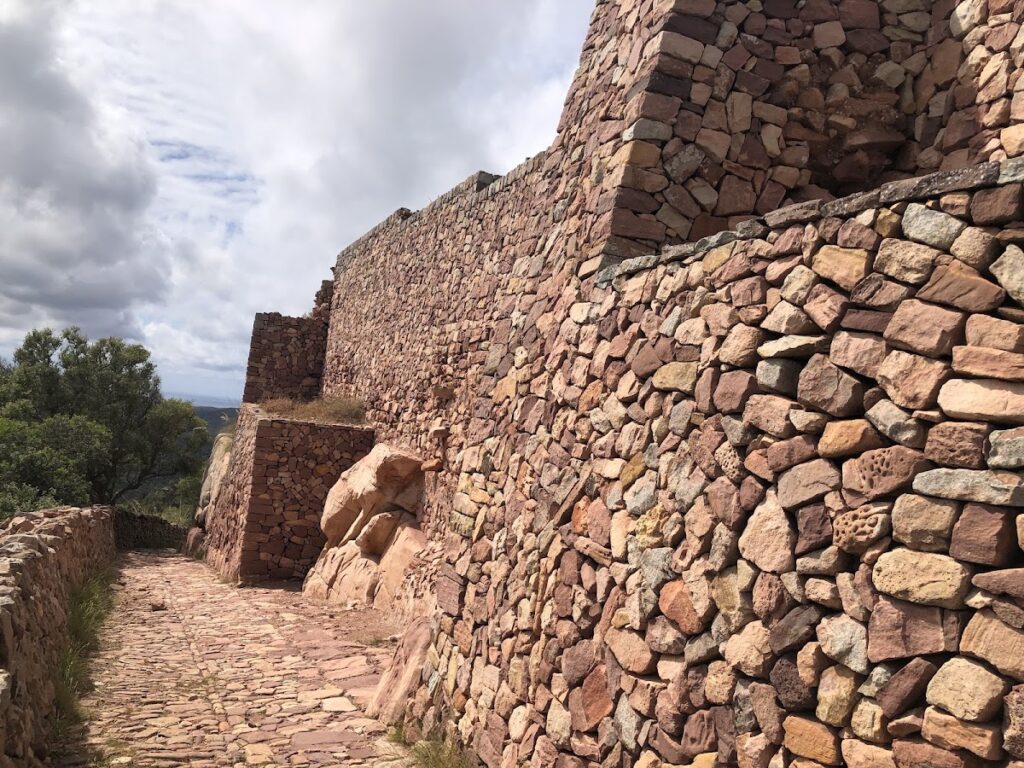Castle of Santa Àgueda: A Historic Fortress on Menorca, Spain
Visitor Information
Google Rating: 4.3
Popularity: Low
Google Maps: View on Google Maps
Country: Spain
Civilization: Unclassified
Remains: Military
History
The Castle of Santa Àgueda stands near Ferreries on the island of Menorca, Spain. Although the current fortress was built by Muslim rulers, its location has a long history of occupation beginning with the prehistoric Talaiot culture during the Iron Age.
During the Roman period, the site continued to be used, as indicated by discoveries of Roman pottery and a notable collection of coins. Archaeological evidence shows that the Romans constructed a road leading up to the summit, suggesting the presence of a military camp or fortified post on this strategic peak.
The castle that largely shapes the site today was built under Muslim control in the 10th and 11th centuries, reflecting Moorish military architecture. It saw further expansion during the rule of the Almoravid dynasty in the late 11th and 12th centuries, and later under the Almohads in the 13th century, who added a dedicated armory known as the Casa d’Armes. This fortress became a critical stronghold during the Christian reconquest of Menorca.
In 1287, Alfonso III of Aragon led the campaign to capture Menorca. The castle was the last Muslim refuge on the island, where the emir Abu Umar ibn Said sought shelter before finally surrendering. Following this conquest, Menorca was incorporated permanently into the Crown of Aragon.
The castle suffered damage after its capture, notably from partial demolition ordered by King Peter IV of Aragon. Later, his daughter Eleonora of Aragon established a chapel in the ruins dedicated to Saint Agatha of Catania. This chapel became an annual pilgrimage site, celebrated each February 5th. The fortress name evolved from its original Arabic term, Sen Ageinz, into Santa Àgueda in honor of the saint associated with this chapel.
Over the centuries after the 14th century, the castle was gradually abandoned and fell into neglect, with the chapel disappearing by the 19th century. In the late 20th century, the site was officially recognized for its cultural importance and placed under public ownership, ending a long history of private possession. Local tradition includes a legend of a golden calf statue hidden beneath the castle walls, adding a layer of myth to its historical narrative.
Remains
The Castle of Santa Àgueda occupies about five hectares on a hilltop, divided into three adjoining sections. Its overall design reflects the evolution of fortification styles from its earliest construction through later medieval expansions.
The oldest portion is the central section, dating to the 10th century Muslim period. It covers roughly 1.5 hectares on the plateau and features a seven-sided, polygonal layout. Originally, sixteen round towers ranged from just under four to six meters wide, with some later replaced by square towers. A prominent central donjon (a fortified main tower) was included in this area. The design and arrangement show clear links to other Moorish military structures of the time, such as the Aljafería fortress in Zaragoza and the Alcazaba of Granada.
To the northwest lies an extensive wing measuring about 275 by 80 meters, enclosing nearly 2.8 hectares. This section contained its own water supply system, including two large cisterns with remnants of masonry and tile still visible. One cistern measures approximately 28 meters by 6 meters, and the other 15 meters by 9 meters. The only way into the fortress was through this northwestern area, accessed by a winding path from the valley below that still preserves a portion of the original Roman road.
The northeastern part of the complex is called the Casa d’Armes or armory. This was built during the 13th-century Almohad period and has an irregular shape. It stretches about 155 meters in length with varying width down to 44 meters at its narrowest, covering around 0.8 hectares. This section reflects later military architectural additions made just prior to the Christian conquest.
Within the fortress ruins, a chapel dedicated to Saint Agatha once stood, constructed in the 14th century by Eleonora of Aragon. Though the chapel no longer exists, its historical presence marked the site as a place of religious importance and led to its renaming.
The castle structures today show the effects of centuries of weathering and human intervention through plundering and neglect. Despite this, the surviving masonry, towers, cisterns, and road segments provide a tangible link to the site’s layered past. Local folklore about a hidden golden calf adds a mythic element closely tied to the fortress’s enigmatic legacy.





